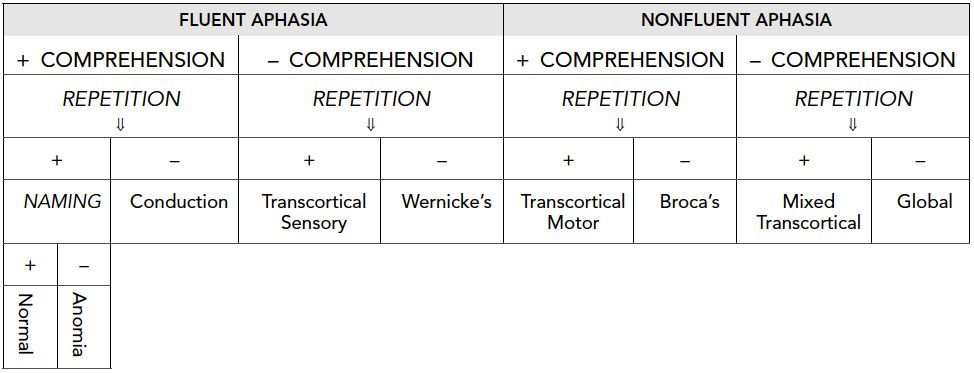APHASIA
SUMMARY
1. Language: symbolic organization of sounds into meaningful words & sentences to represent thought.
2. Aphasia is an impairment of the ability to utilize language due to an injury to the brain.
3. It is characterized by paraphasias, word-finding difficulties, and impaired comprehension.
4. Common disturbances occur in reading & writing, non-verbal construction, problem-solving & gesturing.
5. Note: language areas are anatomically clustered around the sylvian fissure of the dominant (left) hemisphere in 97% of the population[1]
.
DEFINITIONS
6. Non-fluent aphasia: reduced rate of speech and limited language output.
7. Transcortical aphasia: intact repetition.
Boston School of Aphasia Classification:

Reference(s)
- ↑ O’Brien MT, Pallet PJ. Total care of the stroke patient. Little Brown &Co., 1978.
Cifu, D.X. (2020). Braddom’s physical medicine and rehabilitation. Elsevier. Get it on Amazon.
Cuccurullo, S. (2019). Physical medicine and rehabilitation board review. New York: Demosmedical. Get it on Amazon.
O’Young, B., Young, M.A. and Stiens, S.A. (2008). Physical Medicine and Rehabilitation Secrets. Mosby. Get it on Amazon.